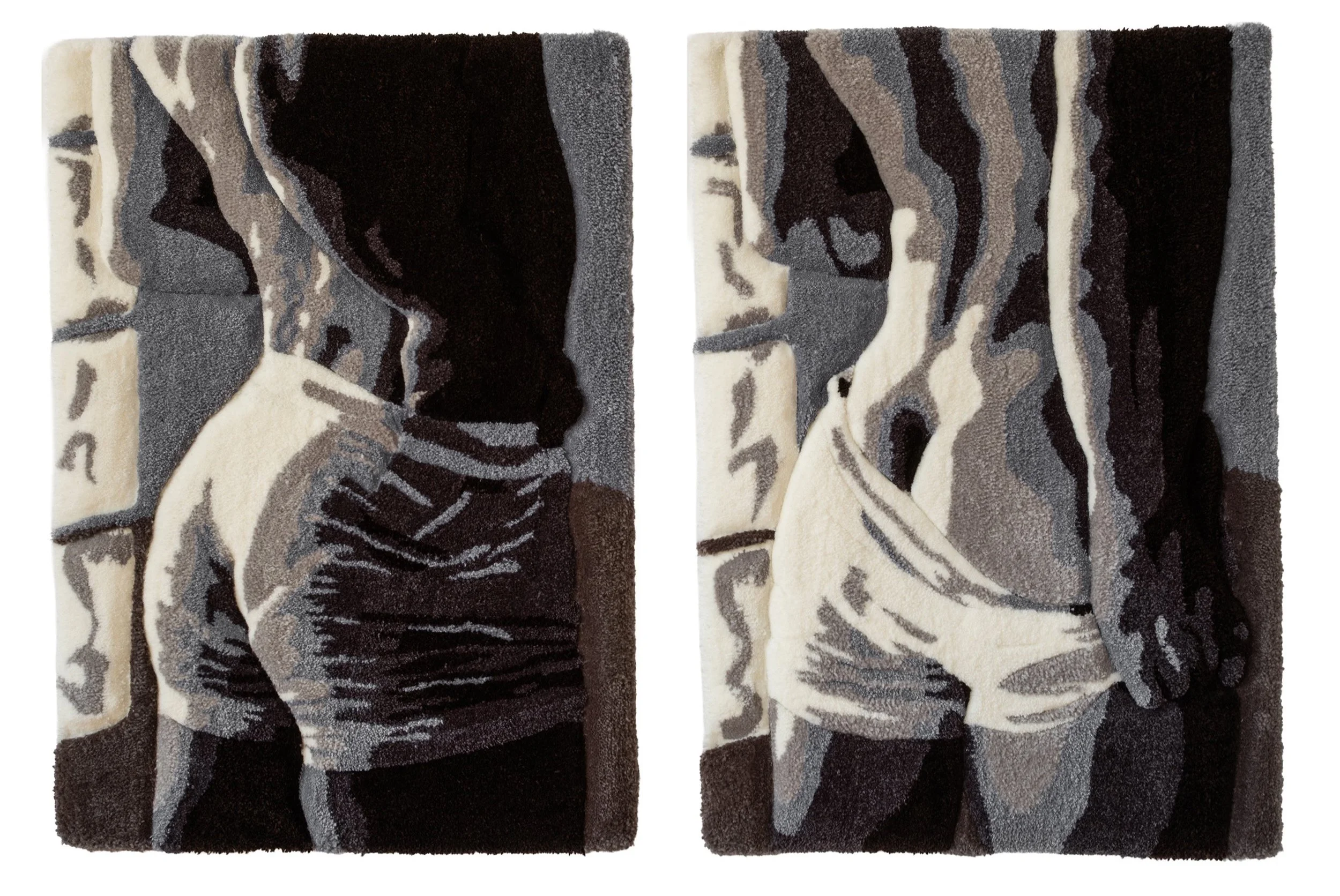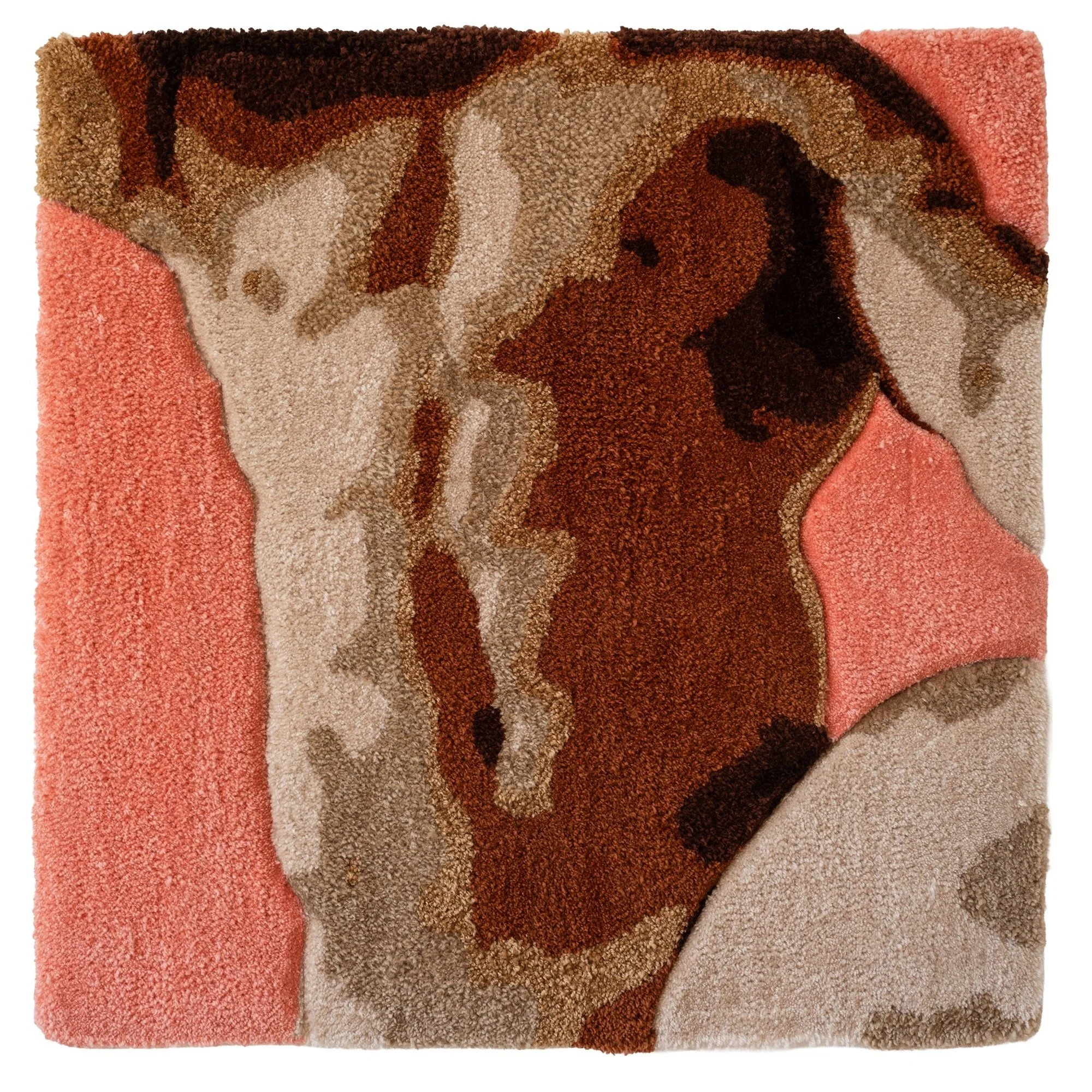Elie Szpilman Gets Under Your Skin in À Fleur de Peau
Elie Szpilman’s À Fleur de Peau occupied Studio 100 like a memory you weren’t sure was yours. Tufted silhouettes — cropped, duplicated, folded — stretched across the white walls like shadows at rest. They weren’t still. They were simply pausing.
All images by Edo Asulin
For his first solo exhibition, Szpilman leaned into softness. Not as comfort, but as method. The wool works, presented at human scale, returned to the body not through anatomy but through atmosphere. They held a pulse. In pairs or alone, each figure was charged with a kind of internal friction — a back turned too sharply, a hand gripping a thigh like an anchor, a shoulder hunched in the quiet choreography of retreat.
Acceptance, 2025
Most of the works resist direct narrative. They sit somewhere between motion and memory — a blink before touch. Szpilman works through repetition, color, and cropping. The result is not decoration, but insistence.
In ‘Acceptance’, two torsos press together in gradient pinks, glowing. The wool reads like skin flushed after effort. Elsewhere, a grayscale figure folds into itself (‘Alone’), disappearing even as it’s rendered. Some compositions are direct, others mirrored, split, or duplicated. Szpilman doesn't provide clarity — only cues.
Alone, 2025
Despite the material — soft, matte, tactile — nothing about the show feels ornamental. Each piece is decisive. Framed not as portraits, but as emotional units. Held breath. Familiarity without names.
Mirage, 2025
Szpilman’s practice unfolds slowly, like bodies do. Built with wool, thread, and a punch needle — not as craft, but as confrontation.
The exhibition’s name — À Fleur de Peau — is a phrase used to describe a state of emotional sensitivity. The point where skin ends and feeling begins. That space — intimate, exposed, impossible to frame — is where Szpilman stays.







